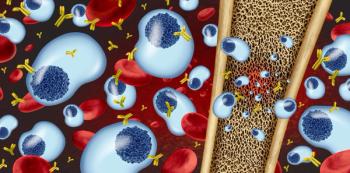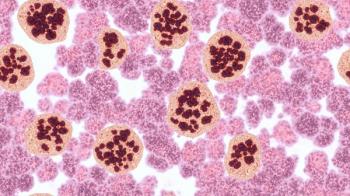
What to Know About the Latest Pediatric Respiratory Infections
Key Takeaways
- MDR-TB treatment has shifted to shorter, all-oral regimens, but pediatric treatment gaps remain, necessitating more clinical trials and improved drug formulations.
- Pneumoniae bacteria, including Mycoplasma pneumoniae, require vigilant testing and vaccination strategies, with macrolides as first-line therapy for Mycoplasma infections.
Infectious disease experts provide the latest updates in RSV, pneumococcal disease, whooping cough, and multidrug-resistant tuberculosis.
Respiratory infections are constantly evolving. Their complexity, high transmissibility, and ability to cause severe complications make them targets of prevention and treatment efforts in health care settings globally. Children are at particular risk of severe respiratory infections because their immune systems are still developing. Because they have smaller lungs and airways, respiratory viruses can be especially threatening.1
For pharmacists and care providers across the health care system, staying up to date on the latest developments in the infectious disease space is critical. At ID Week 2025 this week in Atlanta, Georgia, experts during the What’s New With Respiratory Infections in Children? symposium provided key updates in pediatric respiratory diseases, specifically multidrug-resistant tuberculosis (MDR-TB), various forms of pneumoniae bacteria, whooping cough, and respiratory syncytial virus (RSV).1
What’s New in MDR-TB?
Kristen Wendorf, MD, MS, public health medical officer specializing in tuberculosis control at the California Department of Health, began the session by outlining key therapeutic updates in MDR-TB. Although it is generally rare, MDR-TB is an especially serious type of TB caused by bacteria resistant to 2 of the first-line TB medications: isoniazid and rifampin. Wendorf detailed key risk factors, including a history of prior TB treatment, travel to a region with high prevalence of MDR-TB, or known contact with an infected individual.1
“If you get exposed to MDR-TB, you have MDR-TB,” Wendorf explained, noting its high transmissibility.1
A major theme was the shift from lengthier, burdensome treatments to shorter, all-oral regimens, drastically reducing the complexities of treatment. Wendorf outlined how past treatment protocols stretched months to years, often featuring injectable medications during the intensive phase of treatment. These injectables led to adverse events, including hearing loss, highlighting the need for more effective and palatable treatments.1
Over the past decade, newer drugs have driven a paradigm shift in MDR-TB treatment. Bedaquiline (Sirturo; Johnson & Johnson) and pretomanid (Dovprela; TB Alliance), approved by the FDA in 2012 and 2019, respectively, have become key agents in the fight against MDR-TB. Guidelines have been updated accordingly to reflect these advancements. The CDC and Infectious Diseases Society of America now recommend a 6-month, all-oral regimen of bedaquiline, pretomanid, linezolid (Zyvox; Pfizer), and moxifloxacin (Avelox; Bayer)—called BPaLM—for adolescents and adults 14 years and older weighing at least 40 kg with rifampin-resistant, fluoroquinolone-susceptible TB.1
Treatment gaps persist, especially in pediatrics. Wendorf explained how there is currently no known safe and effective dose of pretomanid for children and advocated for the inclusion of children in more MDR-TB clinical trials. Some research has presented hopeful results, including the phase 3 BEAT-TB trial (NCT04062201), which evaluated a regimen of bedaquiline, delamanid, linezolid, levofloxacin (and/or clofazimine) in children 6 years and older and pregnant mothers.1,2
In that trial, 86.1% of individuals on the treatment regimen had successful outcomes, being deemed noninferior to standard of care. Still, more work must be done. Wendorf called for more clinical trials in children, improved access to essential pediatric drug formulations in the United States, and better palatability of existing first-line medications; she noted that providers often must crush pills into food for children.1,2
Meanwhile, pharmacists can play an essential role in ensuring rapid diagnosis, a pillar of effective MDR-TB treatment. Wendorf emphasized that a rapid molecular test that includes rifampin resistance detection should be employed in any individual suspected of having TB. Pharmacists can promptly refer patients to a TB specialist who could perform the test and counsel patients on appropriate treatment options.1
"We can treat it, we just have to diagnose it and make sure we have the right drugs,” Wendorf said.1
Key Updates in Respiratory Bacteria
Adam Hersh, MD, PhD, pediatric infectious diseases physician at the University of Utah; and Octavio Ramilo, MD, chair of the Department of Infectious Diseases at St Jude Children’s Research Hospital, outlined key updates in the world of respiratory bacteria and viruses. Hersh centered his discussion on pneumoniae bacteria, including Mycoplasma pneumoniae, Streptococcus pneumoniae, and Bordetella pertussis, which can cause whooping cough. Ramilo focused on the evolving nature of RSV in pediatrics.1
Pneumoniae
Hersh described the nature of Mycoplasma pneumoniae’s prevalence, explaining how it often reemerges every 3 to 7 years based on circulating strains. It can cause pediatric respiratory infections, including pneumonia, especially in school-aged children; in 2024, Hersh said that Mycoplasma pneumoniae accounted for approximately half of community-acquired pneumonia hospitalizations in the US.1
Although testing capabilities in primary care settings have grown, Hersh described a need for more testing capacity, especially in years when the bacteria are peaking in incidence. For treatment, pharmacists can recommend macrolides as a first-line therapy; although patients may be concerned about resistance, pharmacists can assure them that macrolide resistance is low in the United States.1
“Mycoplasma is not likely to go away,” Hersh said, noting that some models predict lower levels of bacteria in 2025 before reemerging in 2023.1
For Streptococcus pneumoniae, the bacteria responsible for pneumococcal disease, the intervention is clearer: vaccination. Hersh outlined CDC recommendations for pneumococcal vaccination, noting that all children younger than 5 years are recommended to receive a 4-dose vaccine series, with a dose at 2 months, 4 months, 6 months, and 12 through 15 months. Hersh noted that vaccine recommendations are always expanding, with higher valency conjugate vaccines in the research pipeline. Pharmacists can stay aware of these recommendations and ensure patients receive routine vaccinations.1,3
Pertussis
Whooping cough is an especially serious pediatric respiratory infection. It is highly contagious, and young infants—especially those 6 months or younger—are at the highest risk of serious disease, long-term complications, and death. The hallmark of this infection is a severe, debilitating, “100-day” cough, which impacts individuals of all ages but can be especially serious in young children due to their smaller lungs and airways.1
Hersh cautioned that incidence of whooping cough has heightened following the COVID-19 pandemic. Fortunately—like pneumococcus—whooping cough has safe and effective vaccines available to prevent illness. Pertussis vaccines (DTaP/Tdap)—which include protection against diphtheria and tetanus, are widely available and recommended for infants and children, adolescents, and pregnant women.1,4
Specifically, for infants and children 7 years or younger, DTaP vaccination should be administered in a 5-dose series, with 1 dose at 2 months, 4 months, 6 months, 15 through 18 months, and 4 through 6 years, according to the CDC.1,4
RSV
Ramilo addressed the implications of RSV prevention efforts in the years since maternal and infant treatments have been made available. Importantly, he stressed the trove of clinical and real-world evidence that confirms the effectiveness of monoclonal antibodies such as nirsevimab (Beyfortus; Sanofi) and clesrovimab (Enflonsia; Merck) and maternal immunization at meaningfully reducing RSV-associated lower respiratory tract infection in infants.1
“The clinical trial results are amazing,” Ramilo explained. “Think where we were 10 years ago. We never thought the data would be so good.”1
Ramilo’s investigations have revealed complex immunologic insights into RSV, including the fact that the virus can cause epigenetic changes in immune cells that correlate with disease severity. Furthermore, he has researched the possible relationship between RSV and Streptococcus pneumoniae, noting that there have been unexpected similarities found between RSV-induced bronchiolitis and community-acquired pneumonia.1
Beyond advocating for maternal vaccination, pharmacists can continue to stay current regarding available treatments, vaccine developments, and diagnostics for RSV and other respiratory infections. Disease prevention, medication management, and timely care are all critical aspects of effective respiratory infection treatment.1
REFERENCES
1. Campbell A, Mejias A, Hersh A, Wendorf K, Ramilo O. What’s new with respiratory infections in children? Presented at: Infectious Disease Week 2025; October 21, 2025; Atlanta, GA. Accessed October 22, 2025.
2. Conradie F, Badat T, Poswa A, et al. BEAT Tuberculosis: a randomized controlled trial of a 6-month strategy for rifampicin-resistant tuberculosis. medRxiv. Preprint posted online May 6, 2025. doi:10.1101/2025.05.04.25326549
3. Pneumococcal vaccine recommendations. CDC. October 26, 2024. Accessed October 22, 2025. https://www.cdc.gov/pneumococcal/hcp/vaccine-recommendations/index.html
4. Pertussis vaccination recommendations. CDC. October 31, 2024. Accessed October 22, 2025. https://www.cdc.gov/pertussis/hcp/vaccine-recommendations/index.html
Newsletter
Stay informed on drug updates, treatment guidelines, and pharmacy practice trends—subscribe to Pharmacy Times for weekly clinical insights.




















































































































































































































